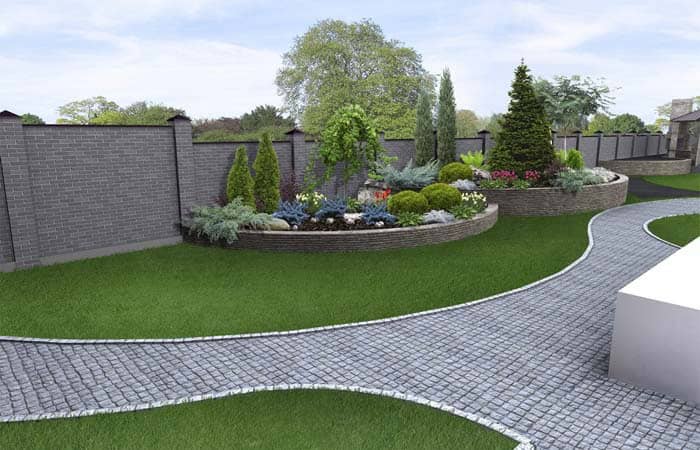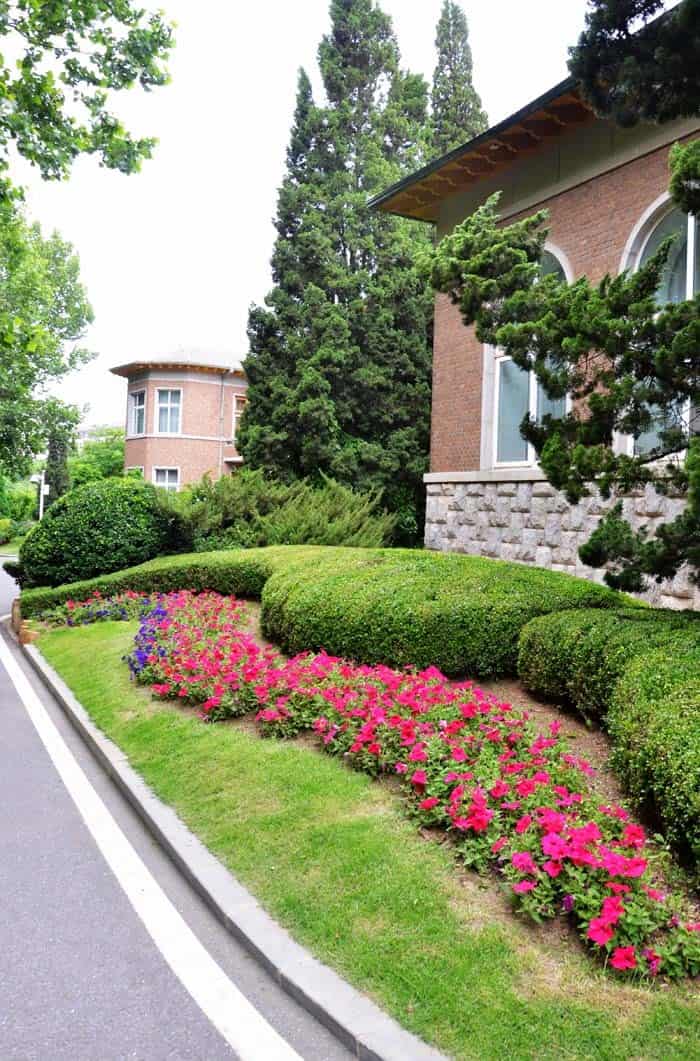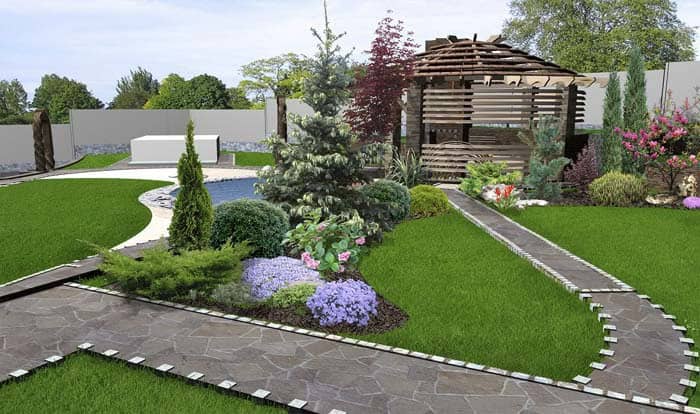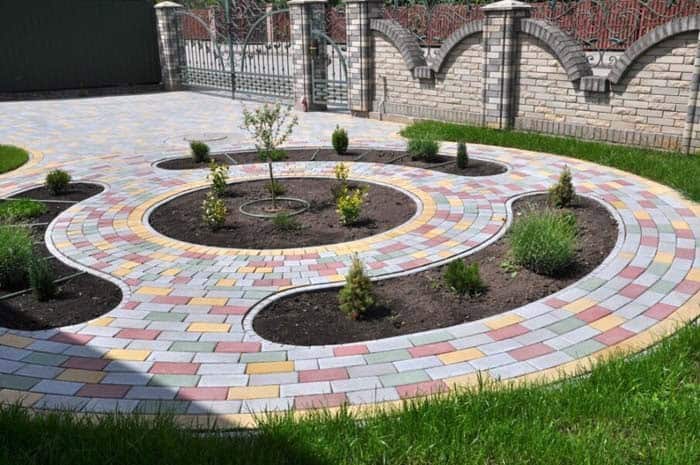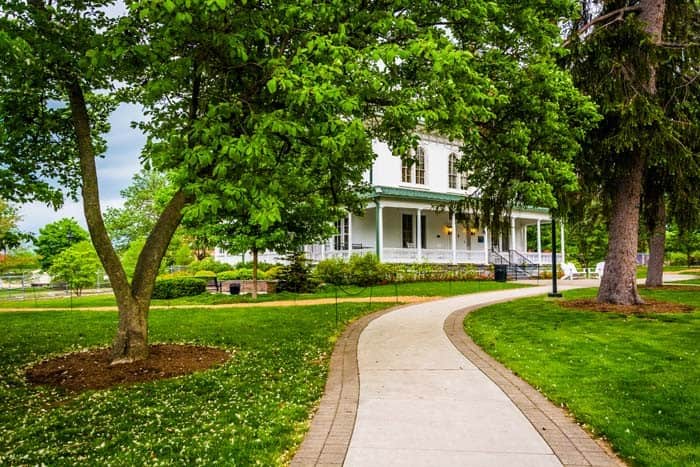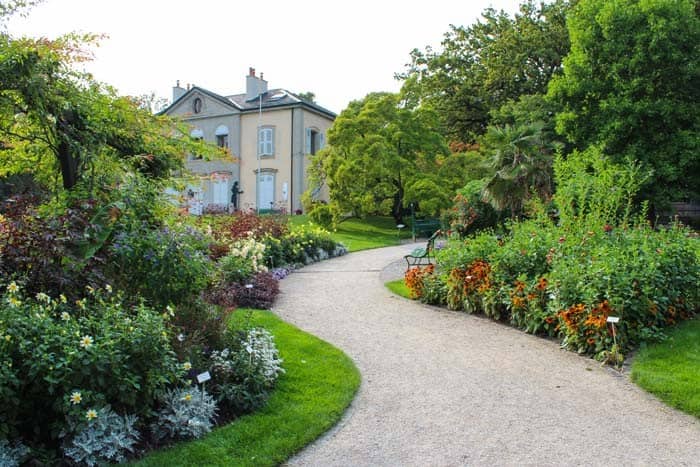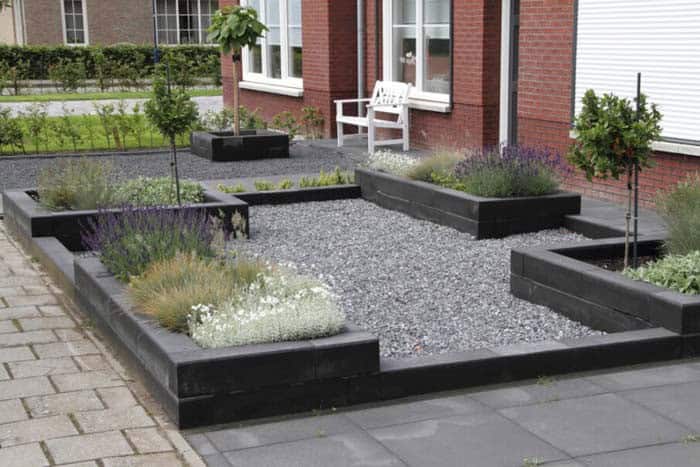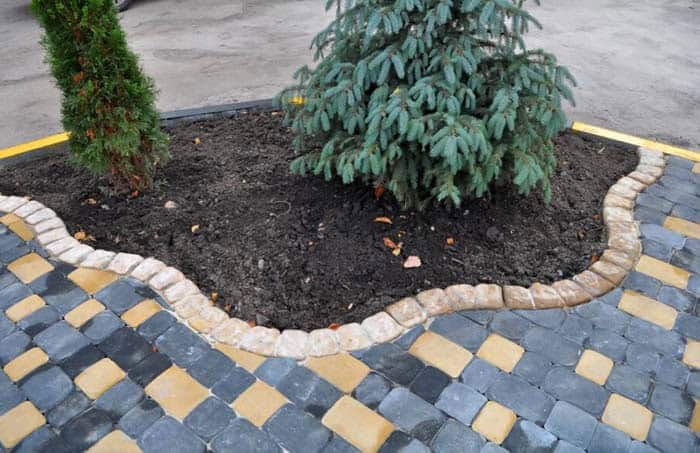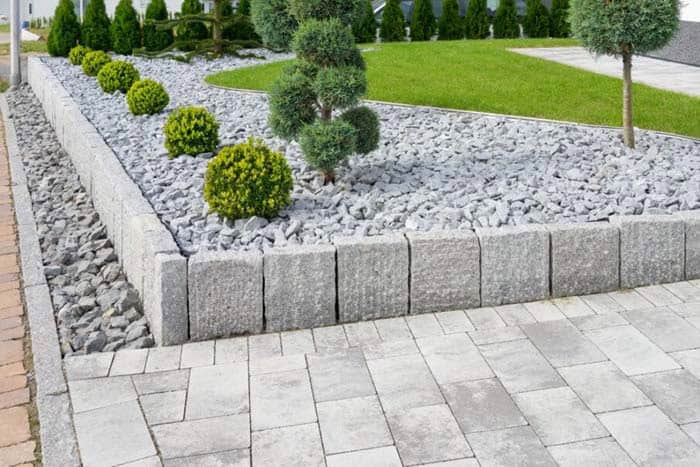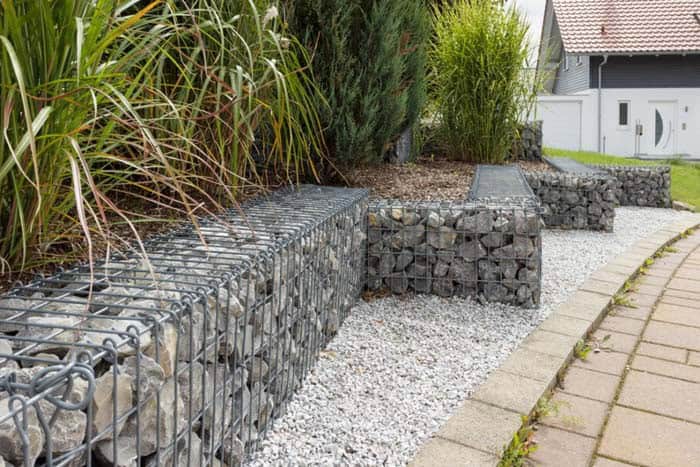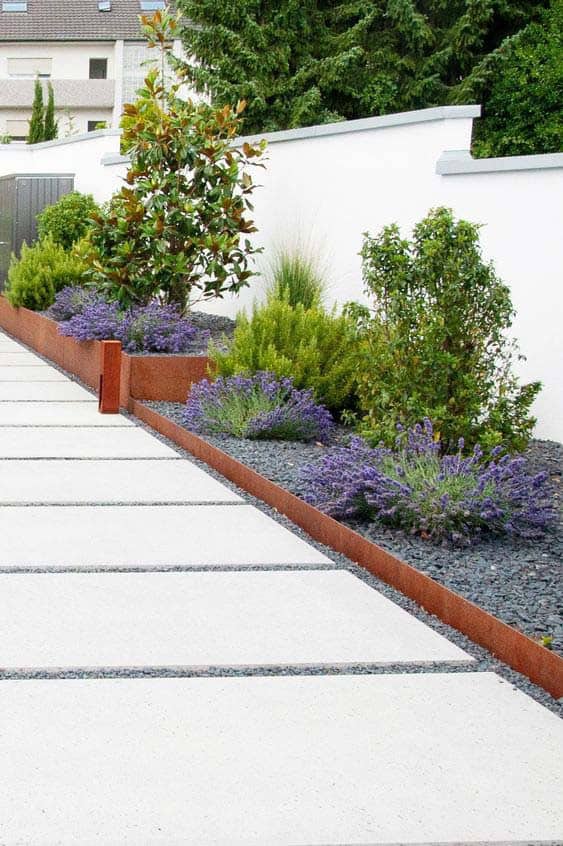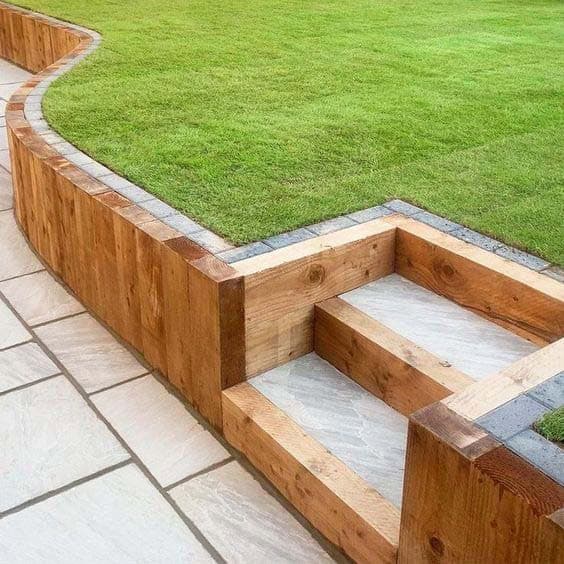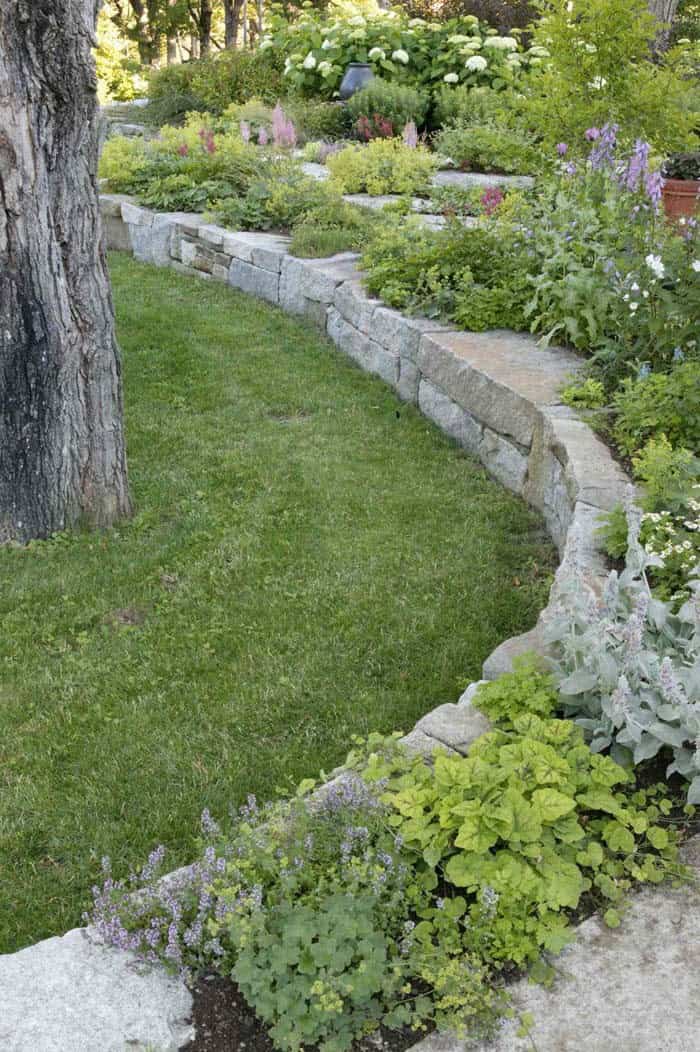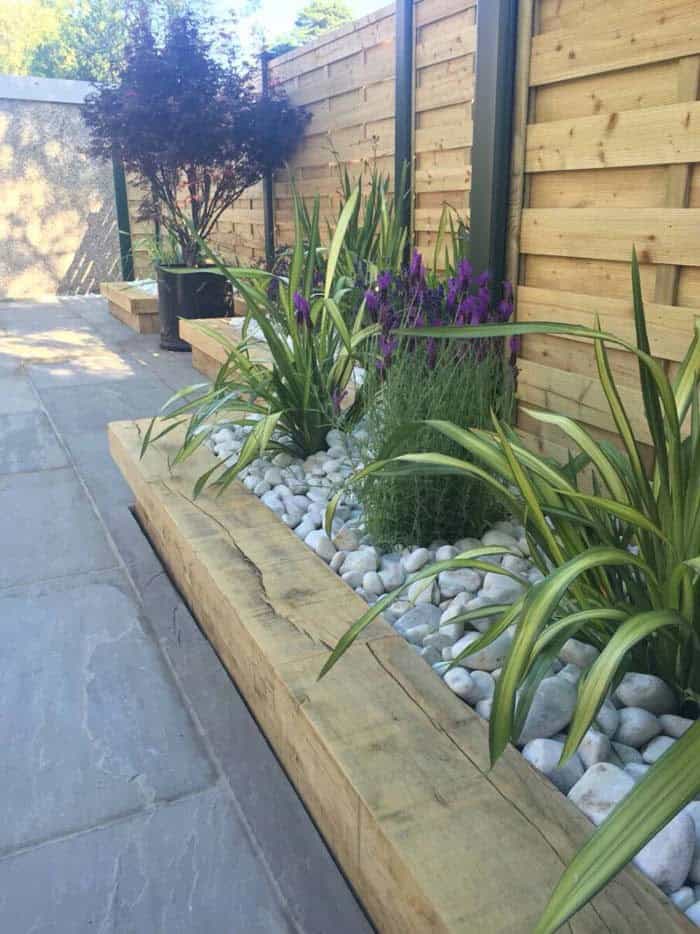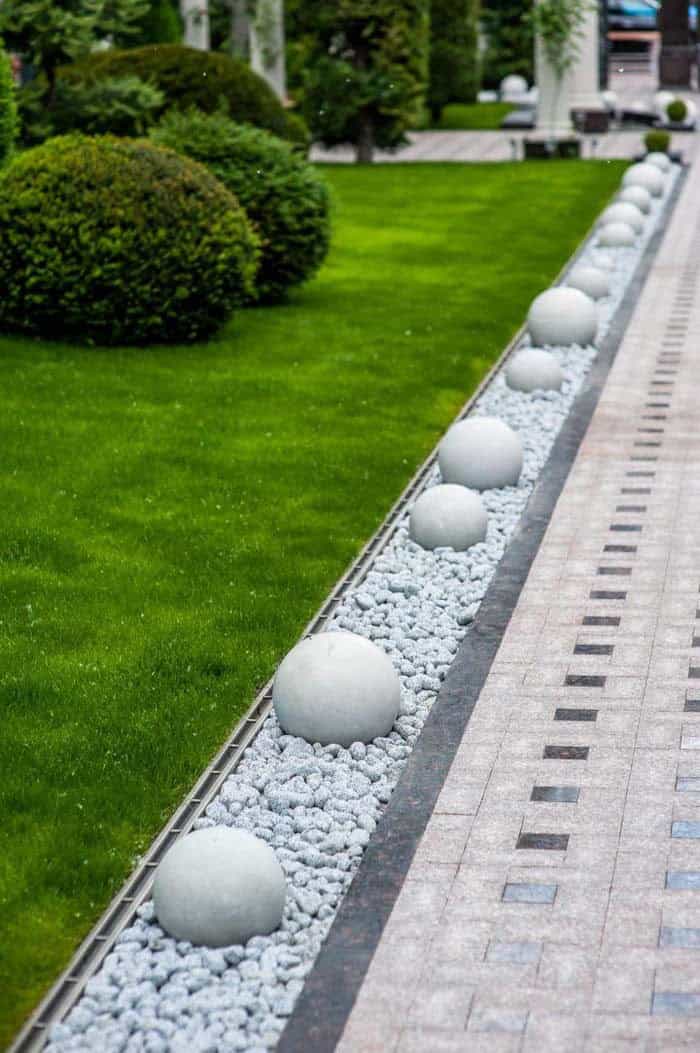Your home’s curb appeal and property value rely heavily on the condition of your garden. One way to give it a modern twist is by incorporating creative edging techniques. Edging serves not only as an aesthetic highlighter for features like flower beds or pathways, but also acts as a barrier against encroaching root systems. Here are some innovative ideas to help you create a contemporary landscape.
The key to the best garden border edging isn’t necessarily about the materials themselves, but how they’re strategically placed within your garden. For instance, brick edging can look stunning, but if it’s simply laid on top of the soil, it won’t effectively block root systems from crossing over into your garden beds. Instead, you need a system that penetrates below the roots to prevent grass and weeds from invading.
If budget is a concern, don’t worry – there are plenty of affordable options available. One of the cheapest ways to edge a garden is to repurpose materials you already have lying around. Reclaimed materials like brick, glass bottles, scrap wood, and metal scraps can all be used as edging, giving your garden a unique charm. When it comes to ease of installation, no-dig edging is often the way to go.
While it may not provide the same level of root barrier as other options, it’s quick to put in place and can add a touch of elegance to your garden design. Alternatively, plastic edging is another easy-to-work-with option that won’t break the bank.
Raised Plant Beds
Crafting visual interest in your garden can be achieved through the strategic use of levels. By incorporating two distinct raised flower beds, you can create a visually appealing design that adds depth and complexity to the fence line. This modern aesthetic is elevated by the incorporation of contained garden beds, which evoke the charm of an English garden while maintaining a sleek, contemporary feel.
Concrete Curb
To achieve a visually appealing and manageable design, pour stamped cement for a seamless finish that effortlessly navigates around corners. Implementing this approach allows for effortless manipulation of the material when creating intricate shapes or details. Next, incorporate layers of plants to bring depth and dimensionality to your garden beds.
By placing flowers in the foreground and boxwood hedges towards the rear, you’ll naturally create organic landscape edging that blends harmoniously with its surroundings.
Black and White Brick Pattern
While the Modern style is characterized by simplicity, its visual language is defined by hard angles and crisp lines. The use of gray and white edging bricks arranged in a deliberate, geometric pattern further reinforces this aesthetic. These design elements work together to create a sense of order and precision, quintessential to the Modern style.
Colorful Brick Mosaics
Innovative use of colorful bricks in curved patterns gives the garden a distinctly modern aesthetic. This design element is echoed throughout the space, including the unique fencing pattern that can be seen. One of the benefits of this approach is that it requires less maintenance and watering, making it an ideal choice for those looking to simplify their outdoor spaces.
Bricks Set Lengthwise
The perimeter of the walkway is defined by traditional red bricks, which provide a striking visual contrast to the surrounding cement. This deliberate juxtaposition creates a unique two-tone aesthetic that adds depth and character to the overall design.
Garden Bed Mixed with Lawn Edging
In modern gardens, a sense of linear order is often achieved through the use of manicured curves and a white path that leads the eye towards a vanishing point, creating an optical illusion that makes the path appear longer than it actually is. The subtle interplay between garden beds and lawn edging creates a visually appealing rhythm as they alternate in coming up to the walkway, drawing the viewer’s gaze along the path.
Square Garden Beds
Embracing the beauty of symmetry, rectangular and square garden beds are taking center stage in modern gardening. This sleek design approach not only adds a touch of sophistication but also creates a sense of order and harmony in the outdoor space. One way to achieve this stylish look is by building a raised garden bed using cinder blocks, which can be easily transformed into a chic feature with a quick coat of black paint.
Reclaimed Bricks
The boundary between the lush garden bed and the vibrant mosaic brick patio is elegantly defined by the reclaimed red bricks, creating a visually appealing contrast that draws the eye and invites exploration.
Stone Edging
To add visual interest, the stone slabs are carefully placed along their edges to form a border. This unique approach combines seamlessly with the minimalist design and two-level hardscape concept, creating a striking topiary feature. When it comes to incorporating stone edging into your garden, there’s no denying that laying the stones in a trench is far more effective than simply placing them on top of the soil. By doing so, you’ll achieve a more polished and long-lasting result.
Gabion Walls
With a history spanning centuries, gabion walls have evolved into a versatile design element. In this instance, the modular structure creates defined corners that contrast beautifully with the curved edge it’s situated against. As time passes, the sedum-filled gabions will mature and fortify their position. Meanwhile, the elevated garden bed boasts an assortment of ornamental grasses, adding depth and visual interest to the overall composition.
Tan and Brown Gravel Hardscape
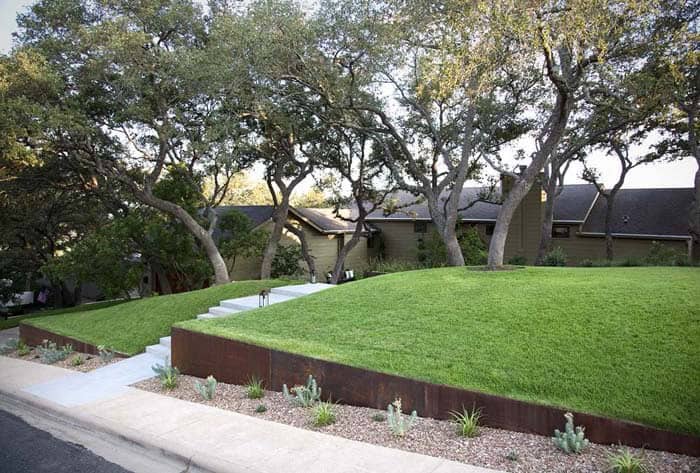
An irregular yard layout doesn’t necessarily mean your outdoor space has to exude a relaxed atmosphere. This particular example features a sudden drop-off, which is expertly mitigated by the installation of a fence and a hardscaped border, meticulously lined with brown gravel and drought-resistant plant life. A thoughtful design choice that effectively transitions from lawn to hardscape, creating a visually appealing and functional space.
When it comes to edging your lawn, wood is certainly an option. However, metal edging is often the more practical choice due to its increased durability and resistance to weathering.
Role Reversal Garden Edging Idea
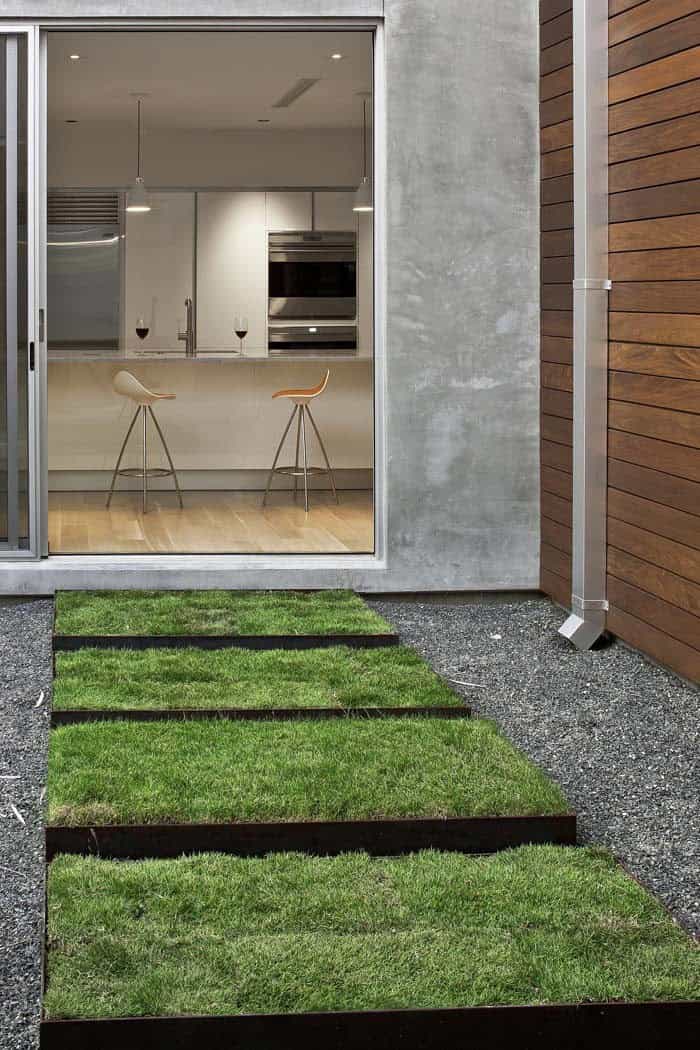
To create an eco-friendly path that promotes water conservation, consider laying down sections of sod. A metal edging system can help keep the sod in place and prevent it from shifting or compacting over time. For the main filler material, you have a range of options available, including cement, natural stone, or even recycled materials. One modern design color that’s particularly popular right now is black, which pairs well with many different landscaping styles.
Recycled rubber filler, for example, offers a unique combination of being both responsible and economical – it’s a great choice for homeowners looking to reduce their environmental footprint while also saving money on their exterior design project.
River Rocks Garden Edging
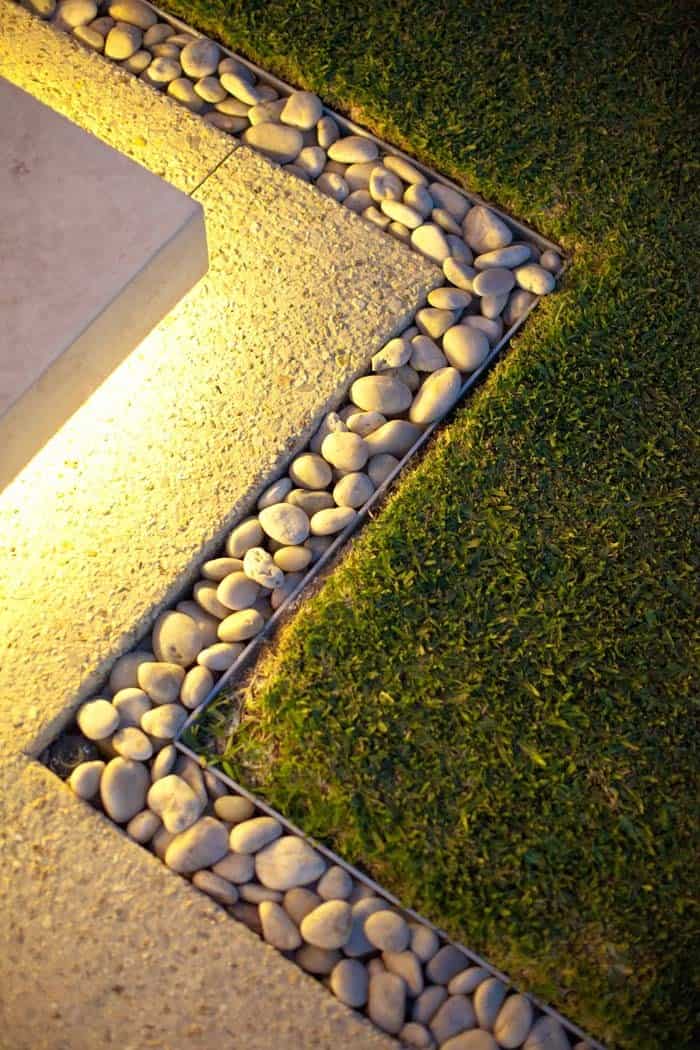
When seeking new and innovative garden ideas, it’s often the combination of traditional concepts that sparks creativity. One such example is the use of smooth river rocks to fill in the hard corners of your garden bed, transforming them into an unexpected focal point. This natural-looking border can be created using metal or plastic garden edging, offering a unique visual interest that adds depth and character to your outdoor space.
Patio Pavers
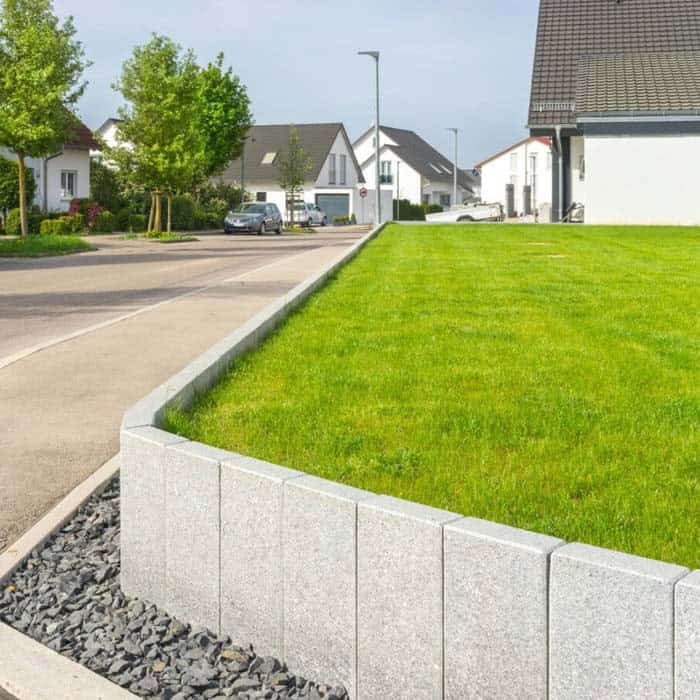
The landscape design features smooth rectangular pavers placed perpendicular to the ground, forming a subtle retaining wall that adds depth and visual interest to the space. The pavers’ edges are carefully set on edge, creating a clean and modern look. In addition to the paver installation, the edging is constructed using poured concrete and filled with gray gravel, providing a durable and low-maintenance border that complements the overall aesthetic.
Metal Edging Idea
A striking aspect of this outdoor space is the juxtaposition of the low metal fence, which serves as a visual separator between distinct sections of the garden. This subtle yet effective design element not only creates a sense of separation but also introduces an intriguing pop of color and texture to the minimally designed landscape. Meanwhile, the black garden bed covering acts as a unifying thread, skillfully tying together various elements within this expansive outdoor space.
Wood Edging and Gray Bricks
In this charming outdoor setting, a harmonious union between wooden edging and gray bricks creates an undulating retaining wall that seamlessly blends with its surroundings. The incorporation of extra brick edging allows for a crisp, clean edge to the lawn, effectively defining the boundary between the natural grass and the carefully crafted hardscape.
For modern garden designs, opt for lighter wood grains which not only add a touch of sophistication but also provide a subtle contrast against the earthy tones of the surrounding landscape.
Layered Landscape Border
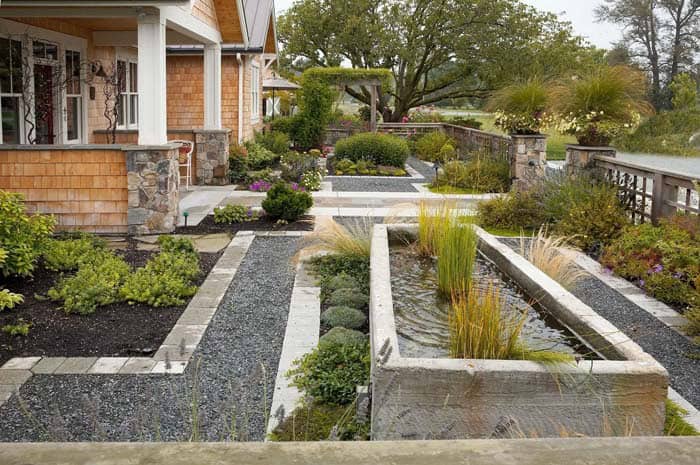
In today’s modern gardens, simplicity and clean lines are key. To achieve this look, stamped concrete is an excellent choice for creating borders that seamlessly integrate with other design elements. In this particular landscape, stamped concrete has been used to create a striking border surrounding a beautiful water feature. The subtle yet effective use of this material allows the garden’s natural beauty to take center stage, while still adding a touch of modern sophistication.
A testament to its versatility, stamped concrete can be matched to any other material in the garden, making it an ideal choice for creating a cohesive and harmonious outdoor space.
Raised Flower Bed
Natural stone stacks create a visually appealing border around a raised flower bed, seamlessly integrating with the surrounding lawn. This clever design solution not only adds a touch of elegance but also defines the garden’s edge, making it perfect for a beautifully manicured outdoor space.
Stone Fence and Layered Garden
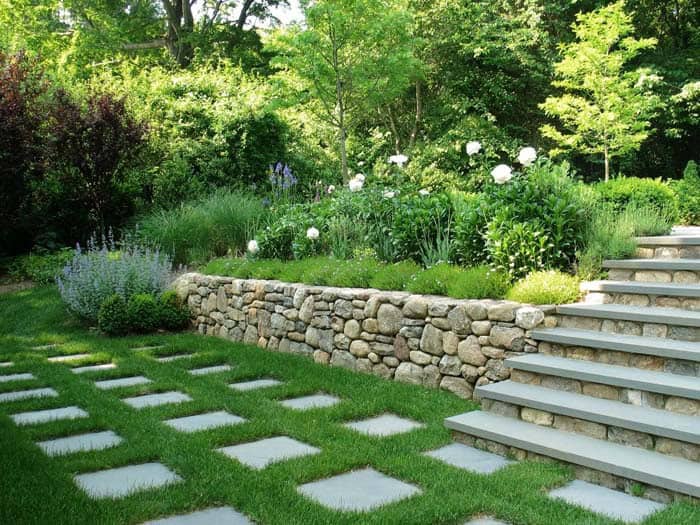
At the crest of a majestic stone retaining wall, a multi-tiered garden unfurls its beauty. The foundation layer consists of compact, rounded plants that create an inviting ascent. Deliberately leaving the base unadorned allows the gaze to effortlessly follow the pavers down to the stairs, crafting a sense of continuity and visual flow.
Railroad Ties Garden Edging
The garden’s landscape is characterized by a medley of textures and hues, where medium-sized white gravel fills the beds, creating a visually appealing contrast. The borders of these gardens are defined by rustic railroad ties, which seamlessly blend with the surrounding wooden fence, exuding an organic charm. This affordable material has been featured in numerous articles on landscaping ideas due to its practicality.
Precast Bricks
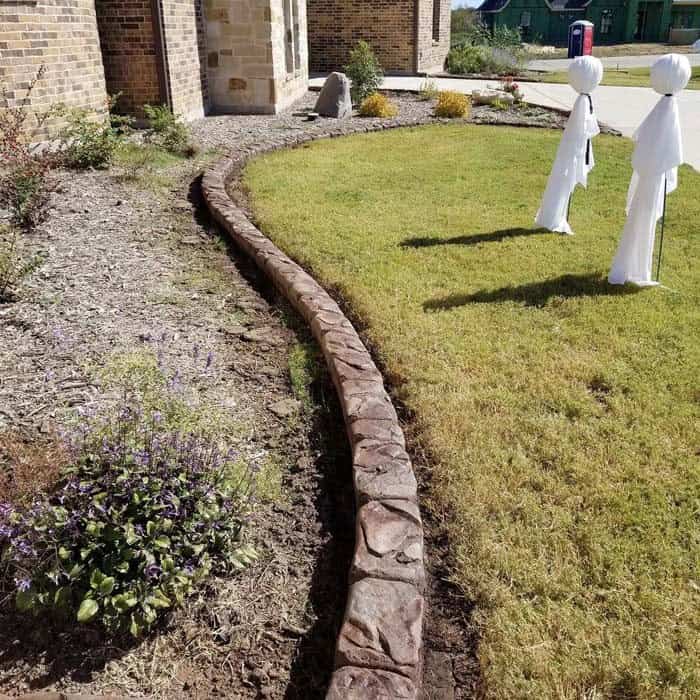
When it comes to setting the tone for your outdoor space, a well-defined garden edge is crucial. Precast bricks offer an attractive and budget-friendly solution to achieve this goal. Not only are they an affordable option, but they can also be customized to fit your unique style and design preferences. From bold colors to intricate patterns, the possibilities are endless when it comes to precast bricks.
Spheres
Garden spheres have become a staple in modern garden design. Strategically placed, these rounded features create a visually appealing edge when paired with a bed of white gravel. This unique combination not only adds aesthetic appeal but also defines the boundaries of the lawn and surrounding plants. Furthermore, steel edging provides an added layer of protection by preventing lawn mowers from cutting too close to the gravel beds, ensuring the integrity of this beautiful design.
Wood Edging
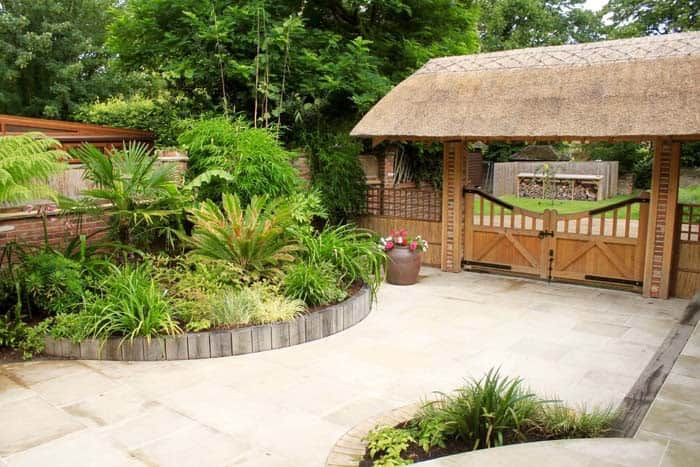
When it comes to garden edging, you’re not limited to a single style. In fact, mixing and matching different materials can add visual interest and texture to your outdoor space. Take this example: on one side of the driveway, a raised garden bed features a rustic wooden edge, while on the other side, a level garden bed is bordered by classic brick. The contrasting edges create a unique and eye-catching design that showcases the versatility of garden edging.
Waterfall Garden Edging
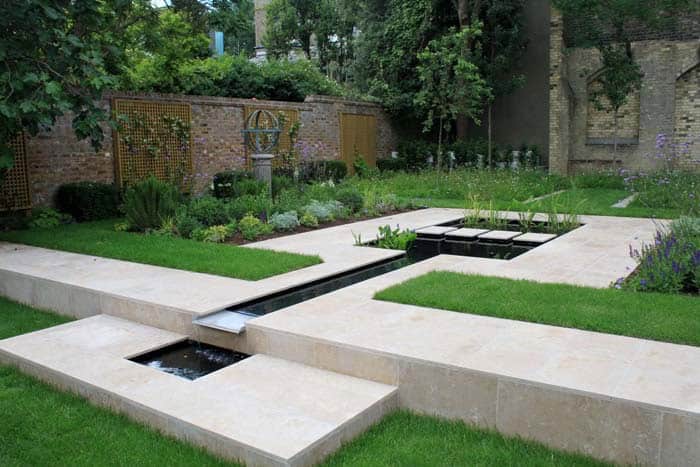
Modern gardens often incorporate distinct design elements, such as polished stone or poured cement surfaces that provide a sleek, streamlined appearance. Symmetry and squared-off corners are also effective ways to achieve a modern aesthetic. Moreover, subtle variations in level between different sections of the garden can create visually striking water features, adding an extra layer of interest to this stylish outdoor space.
White Brick Garden Edging
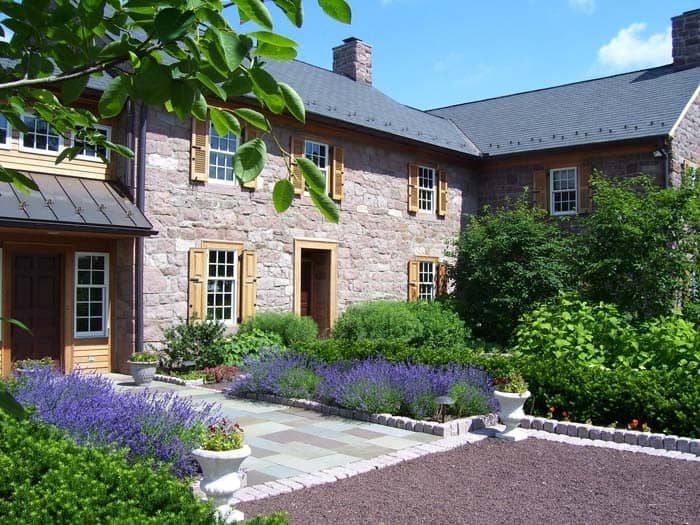
In the grand tradition of formal gardens, a striking visual effect is achieved through the strategic placement of rounded bricks in a light hue. These modest elements are positioned at an angle to create a sense of containment and order within the expansive green space. As if echoing this harmonious design, it’s likely that similar aesthetic sensibilities will be reflected within the home’s interior decor.
